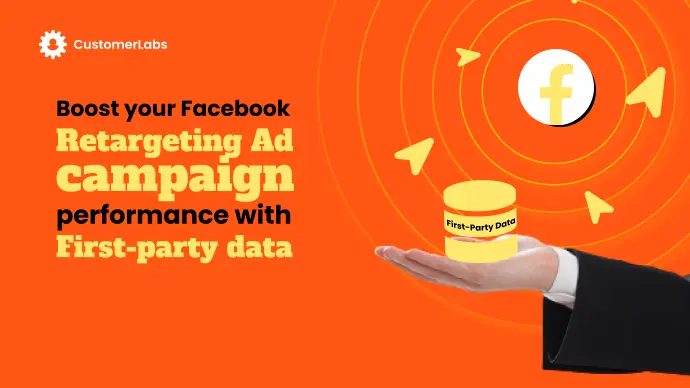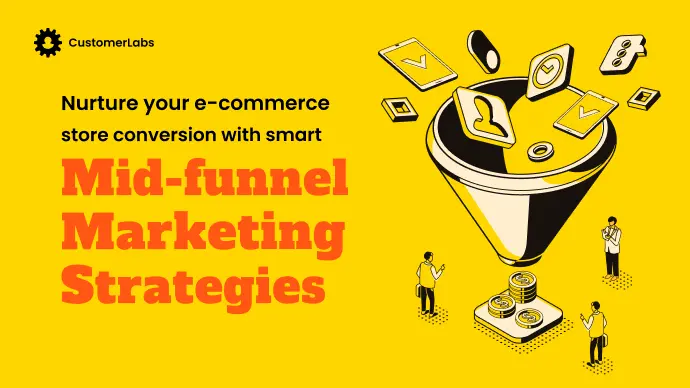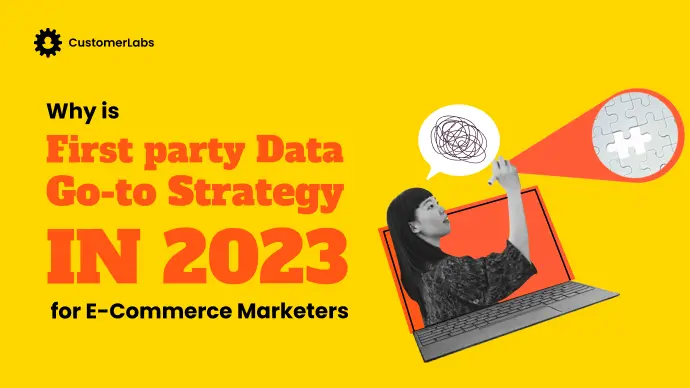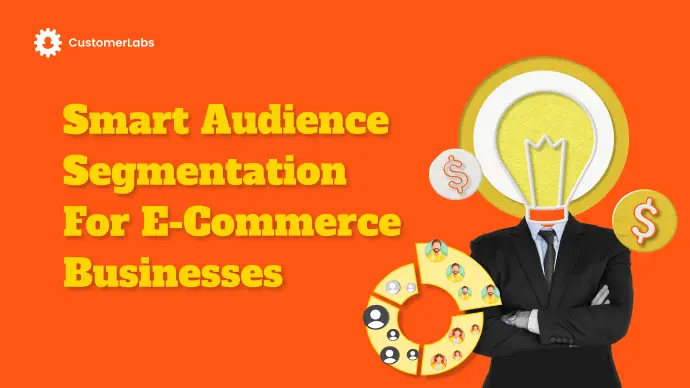
Google says the future is going to be the era of personalization. To adapt yourself to the change and improve your marketing effectiveness, you need to understand how to segment your target audience and how to run personalized retargeting ads. Smart audience segmentation hacks can increase your ad campaign performance despite the data-privacy updates including the iOS14+ & android.
Check out the below examples and think through which one will make your customer come back to you.
Example 1: “Hey, the white frock from your wishlist is on sale – FLAT 40%. Buy Now”
Example 2: “The Sale is ON! Buy Now”
The probability of the customer making a purchase is higher in example 1 rather than in example 2.
The above clearly shows personalization is the key & one-size-fits-all does not work anymore in marketing.
Let’s dive in and know everything about Audience Segmentation & Hacks to increase your Revenue by at least 20% using audience segmentation & running hyper-personalized ads!
What is Audience Segmentation?
Audience Segmentation or user segmentation is a marketing strategy to categorize different groups of consumers or organizations, based on similar needs, behaviors, or interests, allowing businesses to be smarter in their targeting ads and create messages that resonate with particular segments.
Who Does Audience Segmentation Help & How?
Marketers can use the audience segmentation strategy to offer tailored experiences to the users making it easier for them, which in-turn offers high conversion rates for the businesses.
Audience segmentation can be done based on demographics including age, location, gender, income, etc. Whereas smart audience segmentation can be done based on user behavior including added-to-cart but not purchased, purchased, wishlisted, etc.
The above types of segmentation offer marketers
- Good opportunity to target high-prospective customers
- Moderate conversion rates
- Reduce the Customer Acquisition Cost (CAC) by a nominal amount
However, it is recommended to use Advanced Audience Segmentation strategies to target relevant market segmentation. You’ll know what advanced audience segmentation strategy is and how to leverage it to boost your revenue by the end of this blog.
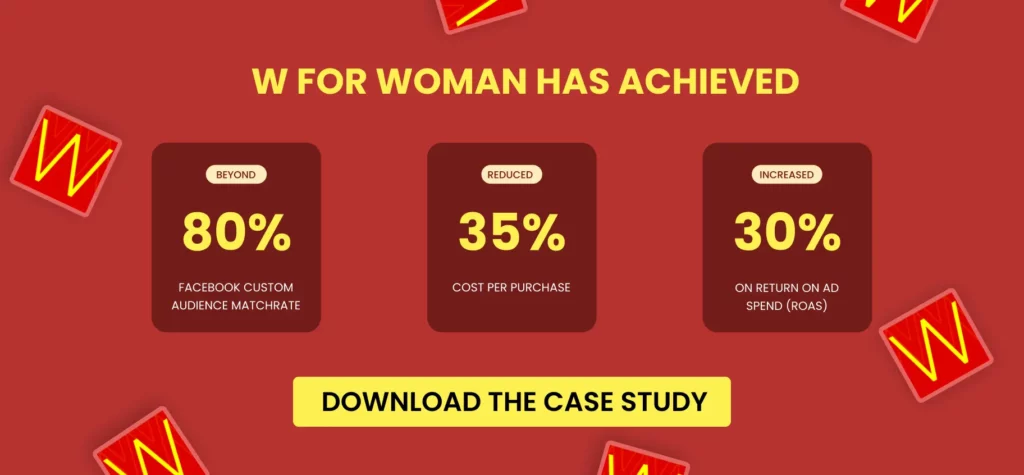
Before that let’s understand the default audience segmentation that Ad platforms have.
Audience Segmentation on Facebook & other Ad Platforms
Ad platforms like Meta & Google collect user data using pixels from the website, sync it with their algorithms and try to match the exact user and similar audience segments to target the prospective customers.
We recommend you segment users based on their behavior and not based on their demographics.
Because when you segment the audiences based on demographics,
- It results in a broader outreach
- Targets not very relevant users
- Low conversion rates
- High CAC
To understand & track the user behavior, they have a few in-built basic segments such as cart abandoned users, viewed page, wishlisted, blog readers, etc. But does the pixel work really effectively?
Challenges: Data-privacy Regulations & the iOS 14 update
However, it is to note that ad platforms can no longer collect the data efficiently due to
- Data-privacy regulations by law-makers across the world
- Data-privacy updates from firms
- Browsers including Safari, Firefox, Brave, etc., have blocked third-party cookie tracking. (Google’s Chrome to join soon)
- Apple’s iOS14+ & Google’s Android privacy updates
- The capabilities of pixel to collect user-behavior data is extremely limited
- User behavior is stored only for 28 days for running retargeting ads on Facebook.
- 180-day cookie retention policy – any segment that you create on Facebook will be gone after 180 days
You can read our blog – What marketers should do to thrive in the ‘no-third-party cookie’ world
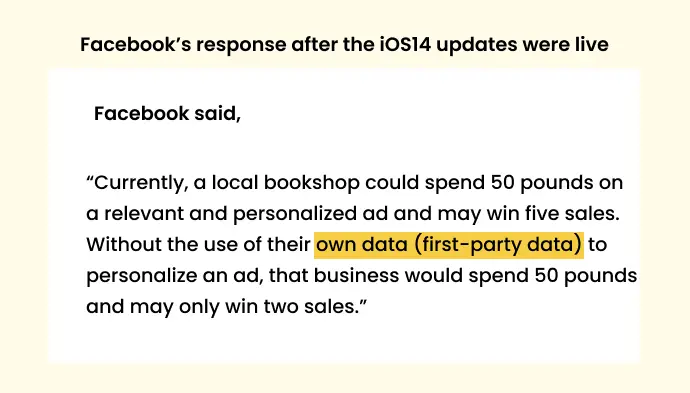
You can read our blog – Facebook is just an advertising tool. Not your Data host.
The data with ad platforms became negligible due to the above.
And that resulted in Facebook’s custom audience match rate dropping below 25%.

When the match rates are low how do you segment your audience and scale your ad campaigns? Even if you pump in more money, it results in a waste of money and not efficient & optimized use of it.
How Does First-party Data Help?
Now, to make your ad campaigns run efficiently & optimize them, you should collect your own website visitor data & sync it with ad platforms.
To collect the first-party data, relying on a First Party Data Ops (1PD Ops) such as CustomerLabs will come handy.
First-party data comprises
- Known website visitor data
- Anonymous website visitor data (95 to 98% of your website visitors are anonymous)
- User-behavior data of all the website visitors
Collect the first-party data, segment your audience (recommended to use advanced audience segmentation techniques), and then sync them to Meta, Google, or any other ad platforms.
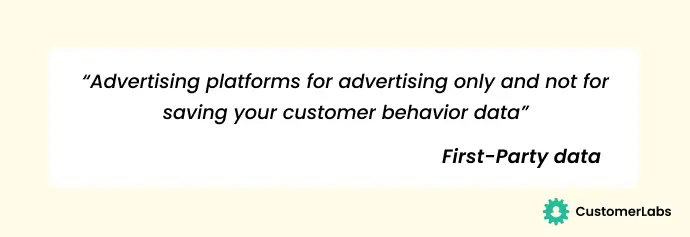
Why should you act now?
Most businesses have not realized that they are in an inevitable and remarkable digital drift from third-party cookie tracking to owning their own customer behavior data (first-party data).
Google has time and again iterated that you have to leverage first-party data for optimized ad campaigns.
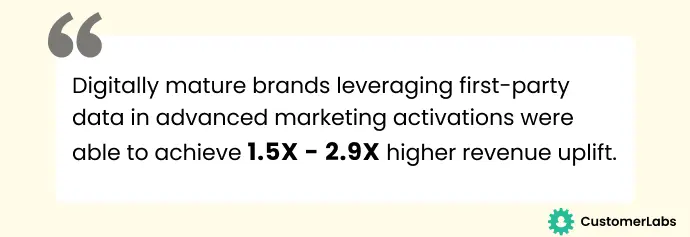
Also, Google, in collaboration with BCG, has conducted a study and classified businesses into four stages based on the digital marketing maturity model and how smartly they use their own data.
What is Digital Marketing Maturity Model?
Digital marketing maturity refers to the ability of a business to consistently use technology to deliver the most relevant content to consumers at various touch points along the purchase journey, also referred to as multi-moment consumer contact.
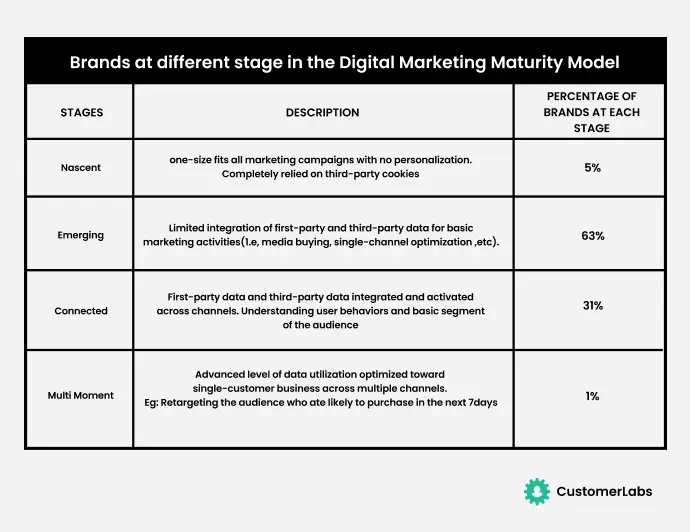
Unfortunately, 63% of e-commerce brands are stuck in stage 2 of digital marketing maturity.
In stage 2 of the Digital Marketing Maturity Model, the marketers are powering Facebook pixel with First-Party data to run their ad campaigns. It implies the understanding of First-Party data among the marketers is still email id, contact number, or any form-filled data (known user data).
However, as explained above, first-party data is beyond that. Anybody who stumbles on your website is your first-party data. As mentioned, generally, 98% of website visitors are anonymous visitors. They could have landed on your website from a Google ad, Facebook ad, social media meme, newspaper ad, television ad, or organic search.
Majority of the anonymous website visitors are the high-intent audience who can be nurtured and pushed to the bottom of the funnel. But these anonymous users are stuck in the middle of the funnel.
Even 1-2% of conversions can significantly improve the bottom-of-the-funnel audience and add more revenue to your balance sheets.
Read how activating the middle of the funnel audience can improve the ROAS by upto 2X times!
Activate and segment your mid-funnel: Stage 2 → Stage 3 of Digital Marketing Maturity
Move away from old-school segmentation to advanced smart audience segmentation.
Segmenting the audience based on the demographics and the default segments available on the advertising platforms like added to cart and checkout made are so old school.
And segmenting them based on their user journey and engaging them with relevant tailored messaging takes the customer a step closer to conversion.
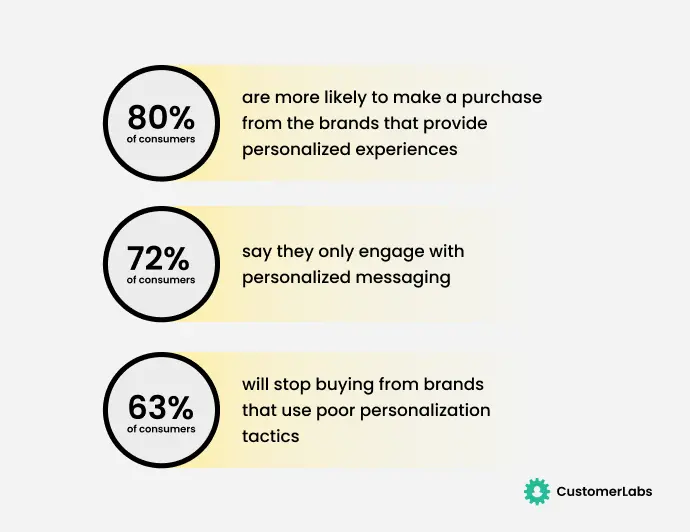
Middle of the funnel segmentation: “Personalized engagement”
Some of the mid-funnel segment examples to whom you can run personalized ads are
- Cart_abandoned for more than 30 days
- Product_viewed_not_ added_to_cart
- Product _viewed_more than three times
- Segment the users who have wishlisted for more than ten products
Segment the users who are first-time visitors and provide them “newbie discount codes”India’s largest e-commerce fashion brand, W for Woman, implemented first-party data strategies and activated its mid-funnel audience. They saw increased match rates beyond 80% and tripled their ROAS. Check out to know W for Woman story.
Bottom of the funnel segmentation: “One step closer to conversion”
- Added_to_cart_not purchased
- Added_to_cart_before 30 days
- Product wishlisted for more than seven days
- Product wishlisted less than three days
Audience re-activation segmentation: “No more 180 days cookie retention fear”
You may have an audience built up during the festive or the sales season, and with no fear of 90 or 180 days of cookie retention, you can bring them back because you own your customer behavior data.
- Bring the Xmas and easter customers back to the funnel
- Bring the Cyber Monday sales audience back to the funnel
- Reactivate & nurture one-time buyers who purchased one year ago.
Build advanced audience segments & push them to various ad platforms in real-time using CustomerLabs’ advanced audience segmentation feature.
Stage 4 of the Digital Marketing Maturity Model is not really far – Mulitmoment
E-commerce marketers can predict and model the users based on their purchase history. One of our e-commerce clients has been segmenting and retargeting their users based on their purchase history:
- Female customers who had higher cart values were retargeted for cosmetic products
- Customers who purchased top-wear clothes were retargeted for bottom-wear
- Predict the possible next purchase of customers based on their purchase history
- Predict the first purchase of a website visitor based on their website behavior
- Segmented the plus-size customers based on the PDP (Product Detail Page) visits.
Key takeaways:
The digital ecosystem is ever-evolving. And to rely on third-party cookie tracking is like playing with fire.
You have to make your business ever-ready for the future of advertising in the digital space, and you can do that by following the below:
- Collect your first-party data now
- Activate your mid-funnel audience
- Advanced Audience Segmentation Strategies
- Split your advertising budget into three funnels as recommended instead of focusing only on the top-funnel audience.
- Personalize your customer engagement by advanced segmentation to progress toward the further stages of digital marketing maturity.
Be futuristic and adapt to the changes, incorporate advanced audience segmentation coupled with first-party data strategies to run hyper-personalized ads and add 20% to revenue!

